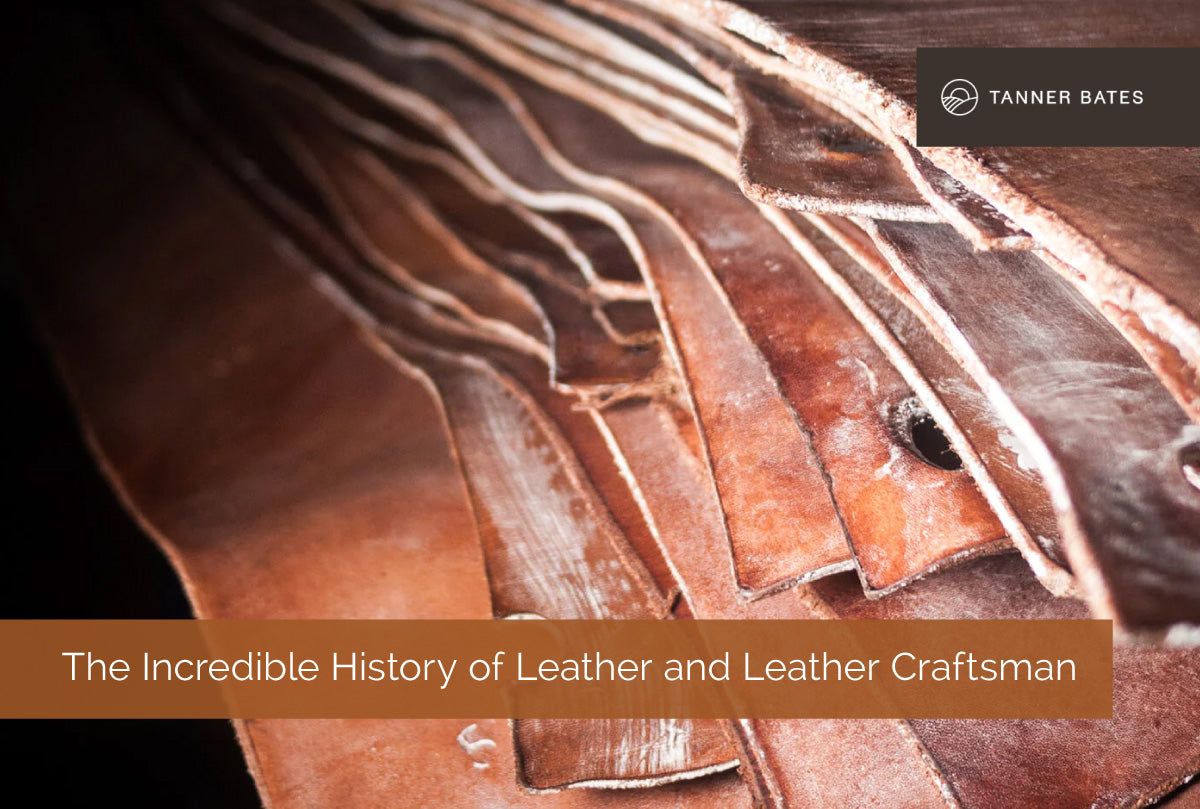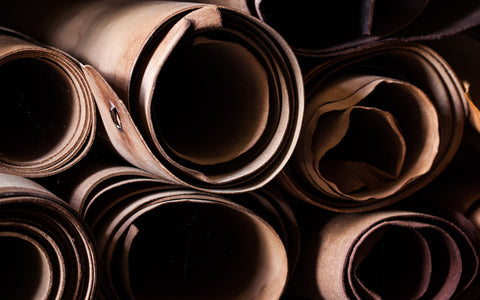
The Incredible History of Leather and Leather Craftsman
The Incredible History of Leather and Leather Craftsman
Leather, a timeless material, has been an essential part of human history for thousands of years. This article aims to explore the fascinating origins and development of leather and the craftsmanship involved in transforming this raw material into beautiful and functional objects. As we delve into the history of leather and the skills of leather craftsmen, we will take you on a journey through time, highlighting the various milestones in the evolution of leather and its ever-present role in human society.
The Beginnings of Leather: Pre-History to Ancient Civilisations
The earliest evidence of leather used can be traced back to around 400,000 years ago in Hoxne, England. From the Stone Age to the Iron Age, ancient civilisations began to harness the potential of leather for various purposes. They utilised animal skins for protection, clothing, footwear, and tools, marking the beginnings of leather craftsmanship.
Leather in the Stone Age (Pre-History to 3000 BC)
During the Stone Age, early humans began using stone tools to skin animal hides and scrape them clean, preparing them for tanning and preservation processes. These early leather works provided clothing, shelter, and footwear for our ancestors, allowing them to adapt to different environments and survive harsh conditions.
Leather in the Bronze Age (3000 BC - 1200 BC)
The Bronze Age saw significant advancements in leather production and craftsmanship. With the development of trade, tanning techniques improved, and leather was used for a wider variety of goods, such as shoes, capes, belts, and protective gear. Leathercraft reached new heights during this period, with artisans creating intricate designs and finishes on leather products.

Leather in the Iron Age (1200 BC - 550 BC)
The Iron Age witnessed further advancements in leather production and craftsmanship. Leather became an essential material for a wide range of applications, from clothing and shoes to military gear and equipment. The Roman Empire, in particular, made extensive use of leather, revolutionising the leather industry and setting the stage for its continued growth throughout history.
The Evolution of Leather in Ancient Greece and Rome
Leather played a significant role in the lives of ancient Greeks and Romans. From 800 BC onwards, these civilisations used leather for various purposes, including footwear, clothing, protective gear, and even storage containers. In ancient Greece, leather was predominantly used for making sandals, a popular form of footwear at the time. Other applications included the production of shields and bags, demonstrating the versatility of this remarkable material.
Leather in Ancient Rome (800 BC - 476 AD)
The Roman Empire was a major consumer of leather. Leather was used extensively for clothing, shoes, belts, harnesses, boots, saddles, and tents, among other items. The Romans developed innovative tanning techniques, producing softer and more versatile leather that could be used for a wide range of applications.
The Middle Ages and the Renaissance: A Flourishing of Leather Craftsmanship
During the Middle Ages and the Renaissance, leather craftsmanship reached new heights, with artisans experimenting with various techniques and creating intricate designs on leather products.
Leather in the Middle Ages (4 AD - 1500 AD)
In the Middle Ages, leather craft continued to develop, with tooling, painting, dyeing, and carving techniques being refined and expanded. Leather was used for clothing, knife sheaths, shoes, parchment, saddles, books, and boxes, among other items. Artistic applications of leather also began to emerge during this period.
Leather in the Renaissance (1350s - 1650s)
The Renaissance saw a surge in leather craftsmanship, with artisans shaping, stamping, and moulding leather for both artistic and functional purposes. Leather was extensively used for clothing, protective gear, saddlery, and various accessories during this time, highlighting its versatility and enduring appeal.

The Enlightenment and the Industrial Revolution: Transforming the Leather Industry
The Enlightenment and the Industrial Revolution brought about significant changes in the leather industry, with new tanning techniques and mass production methods transforming the way leather was made and used.
Leather in the Enlightenment (1650s - 1780s)
During the Enlightenment, leather continued to be used in much the same way as before, with improved fashioning and finishing techniques. Leather was employed for book covers, shoes, military gear, and various functional items such as satchels, pouches, aprons, bags, belts, and hats.
Leather in the Industrial Revolution (1750s - 1900)
The Industrial Revolution had a profound impact on the leather industry. Machines enabled faster production of finished leather, and the leather itself played a crucial role in the operation of these machines, with leather belts driving their mechanisms. Leather production reached its peak during the middle of the Industrial Revolution.

Patent Leather and Chromium Tanning: New Developments in Leather Production
In 1818, patent leather was developed, offering a high-gloss finish that greatly enhanced the aesthetic appeal of leather products. Chromium tanning, invented in 1858, revolutionised the leather industry by enabling faster, thinner, and softer leather production, catering to the growing demand for versatile leather products.
Modern Leather: A Timeless Material in the 21st Century
Today, leather continues to be an essential material in numerous industries, with various tanning processes and grades available to cater to diverse needs. From vegetable and chrome tanning to aldehyde, brain, and alum tanning, leather production has come a long way since its humble beginnings.
Leather is used extensively in many everyday items such as wallets, keychains, saddles, aprons, hats, and accessories. Its versatility and durability, coupled with the skill and dedication of leather craftsmen, ensure that leather remains a timeless material deeply rooted in human history and culture.
Leave a comment
Comments will be approved before showing up.
Also in News

Leather: Britain's 500-Year Legacy of Leather Craftsmanship
LEATHER. A material that shaped Britain's industrial identity for over five centuries.
In 1657 Leather working stood proud as Britain's second most valuable trade, surpassed only by wool. Nearly one-tenth of urban workers crafted everything from saddles to shoes, their skilled hands building an empire of leather.
Leather's story in Britain runs deep. From medieval guild workshops to today's master craftsmen, this remarkable material connects past and present.

Why Leather Apple Watch Straps Are the Ultimate Upgrade
Your Apple Watch is more than just a piece of tech; it's an everyday companion, a style statement, and, for many, an essential tool.
But let's be honest - those standard straps?

The Timeless Value of Hand-Stitched Leather Goods You Can Pass Down for Generations
When you pick up a hand-stitched leather wallet or bag, it feels different. The texture, the stitching, the way it sits perfectly in your hand – these subtle details tell a story of craftsmanship. But in a world driven by speed and automation, the art of hand-stitching leather is becoming rare.
